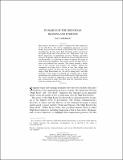In Search of the High Road: Meaning and Evidence
Author(s)
Osterman, Paul
DownloadIn-Search-of-the-High-Road.pdf (243.5Kb)
OPEN_ACCESS_POLICY
Open Access Policy
Creative Commons Attribution-Noncommercial-Share Alike
Terms of use
Metadata
Show full item recordAbstract
This article is the first in a series to celebrate the 70th anniversary of the ILR Review. We will be highlighting important research themes that have been featured in the journal over its many years of publication. In this article, Paul Osterman reviews research on the quality of jobs and recent debates over “High Road” and “Low Road” approaches to employment practices. Scholars and policy advocates frequently utilize the distinction between High Road and Low Road firms as a framework for efforts to improve the quality of work in low-wage employers. This article assesses the logic and evidence that underlies this construct. The author provides a definition of the concept and examines the evidence behind the assumption that firms have a choice in how they design their employment policies. He then takes up the assertion that firms that adopt a High Road model can “do well by doing good” and adds precision to this claim by reviewing the evidence that a profit-maximizing firm would benefit from following the High Road path. The article concludes by suggesting a research agenda and providing a framework for policy that flows from the conclusions drawn from the existing research base.
Date issued
2017-10Department
Sloan School of ManagementJournal
ILR Review
Publisher
SAGE Publications
Citation
Osterman, Paul. “In Search of the High Road: Meaning and Evidence.” ILR Review 71, no. 1 (October 23, 2017): 3–34. © 2017 The Author
Version: Author's final manuscript
ISSN
0019-7939
2162-271X